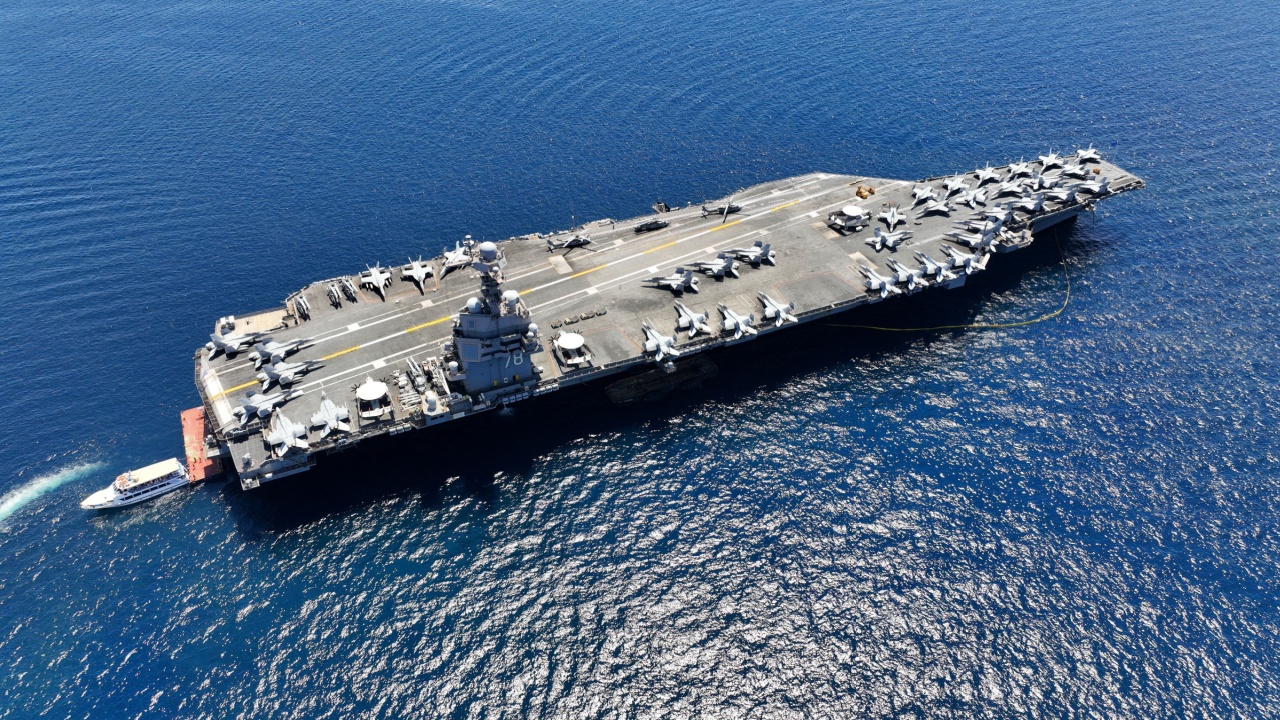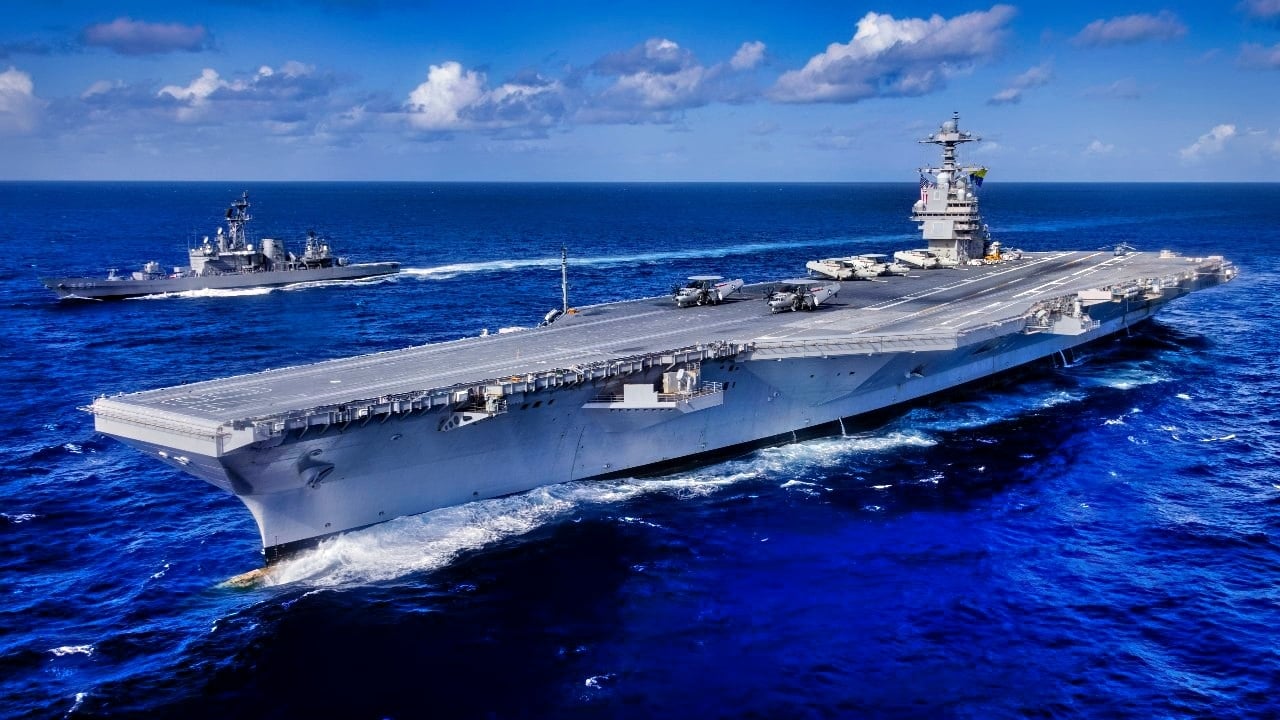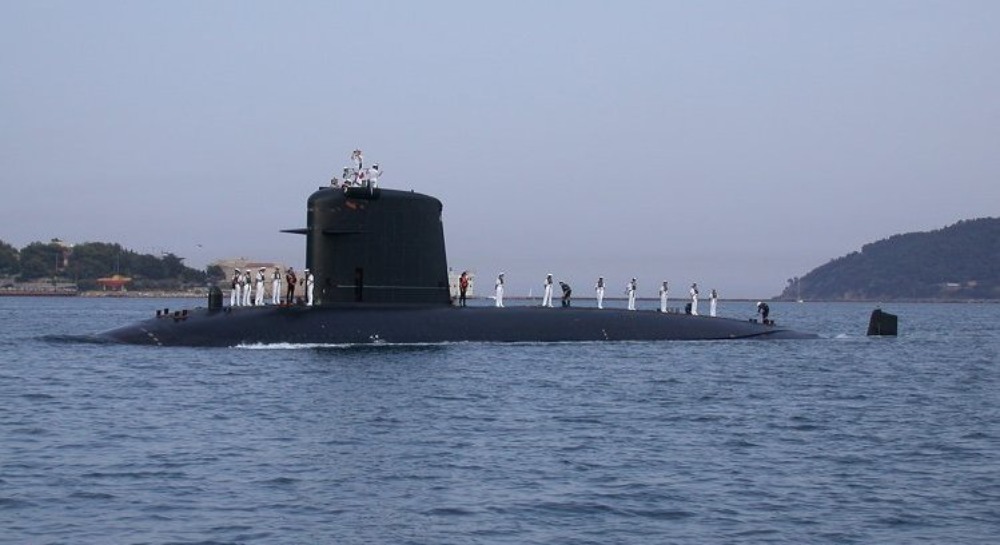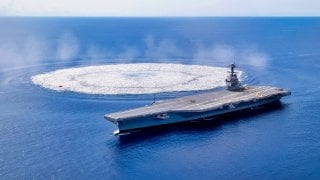2 Words That Explain How a French Submarine 'Sank' a Navy Aircraft Carrier
The USS Theodore Roosevelt (CVN-71), a formidable Nimitz-class aircraft carrier, faced a surprising defeat in 2015 when a 30-year-old French Rubis-class submarine, the Saphir, "sank" it during a war game off Florida.
Stealth Wins: The USS Theodore Roosevelt (CVN-71), a formidable Nimitz-class supercarrier, faced a surprising defeat in 2015 when a 30-year-old French Rubis-class submarine, the Saphir, "sank" it during a war game off Florida.

-This exercise exposed vulnerabilities in U.S. anti-submarine defenses, as the Saphir stealthily bypassed the carrier’s defenses and took down the Roosevelt along with four escort ships. Despite this simulated loss, the Theodore Roosevelt remains active, while Saphir was decommissioned in 2019.
-This incident highlighted challenges for the U.S. Navy’s carrier strategy and underscored the evolving threats submarines pose to large surface ships.
How a 30-Year-Old French Sub Sank a U.S. Supercarrier in 2015 War Game
In recent months, we at The National Interest have published multiple stories on how the mighty USS Ronald Reagan (CVN-76), a $6B Nimitz-class nuclear-powered supercarrier, was “sunk” by a $100M (equivalent to 1,041,480,000 in Swedish Krona) Swedish Navy (Svenska marinen) submarine, the HSwMS (His/Her Swedish Majesty’s Ship) Gotland back in 2005.
Well, it turns out that the Swedes weren’t the only naval submarine force to inflict such humiliation upon the pride of the U.S. Navy by “sinking” a Nimitz-class carrier in a training exercise. Ten years after the Swedes pulled off the aforementioned feat, the French Navy (Marine nationale) did essentially the same thing to another Nimitz-class warship, This is the saga of the 8,500,000-franc—equivalent to $1.40 million—Rubis (“Ruby” ) class submarine Saphir (“Sapphire”) and the $4.5 billion USS Theodore Roosevelt.
NOTE: For the record, the USN aircraft carrier to be sunk in real life by an enemy submarine was the USS Block Island (CVE-21/AVG-21/ACV-21), sunk on May 29, 1944, by the Nazi German Kriegsmarine U-549; she was the only American carrier to be sunk in the Atlantic Theatre of World War II. The last carrier of any kind to be sunk by an adversary’s sub was the Imperial Japanese Navy (IJN) carrier Unryu, sunk by the USS Redfish (SS-395) on December 19, 1944.

Profile of the Victim: Theodore Roosevelt (CVN-71) Early History and Specifications
USS Theodore Roosevelt is the fourth ship pf the Nimitz class built by Newport News Shipbuilding (NNS)—a division of Huntington Ingalls Industries (HII)—in Newport News, Virginia. She was ordered on September 39, 1980, laid down on Halloween Day 1981, launched on October 27, 1984, and commissioned on October 25, 1986. Her motto is “Qui Plantavit Curabit (He who has planted will preserve),” and her unofficial nicknames are “TR” and “Big Stick.” The behemoth warship bears the following specifications:
Displacement: 117,200 tons
Hull length: 1,092 feet (332.8 m)
Beam Width: 252 ft (76.8 m)
Draft: 37 feet (11.3 m)
Propulsion: two × Westinghouse A4W nuclear reactors (HEU 93.5%); four × steam turbines; four × shafts; 260,000 shp (194 MW)
Max speed: 30+ knots (56+ km/h; 35+ mph)
Crew Complement: 3,200 commissioned officers and enlisted sailors (ship’s company); 2,480 officers and enlisted (air wing)
Aircraft Carrying Capacity: ninety fixed-wing and rotary-wing assets
Armament: 2x Sea Sparrow Missiles; 2x RIM-116 Rolling Airframe Missiles; Phalanx Close-in Weapons System (CIWS)
Profile of the Victimizer: Saphir (Pennant No. S602) Early History and Specifications
The Saphir ship of the second ship Rubis class (six such subs have been built, with half of them still actively serving. Two others were initially planned but later canceled). The Rubis-class was France’s first generation of nuclear attack submarines (SSNs), and, as noted by GlobalSecurity.org:
“The six Rubis submarines are the smallest impact nuclear submarines in the world. They are armed with four torpedo tubes, also suitable for firing Exoset [sic] cruise missiles.”

Built by Naval Group (formerly DCNS)—headquartered in Paris—the Saphir was laid down on September 1, 1979, launched on September 1, 1981, and July 6, 1984. She had the following vital stats:
Displacement: 2,600 tons submerged
Hull length: 73.6 m (241 ft)
Beam Width: 7.6 m (25 ft)
Draft: 6.4 m (21 ft)
Propulsion: Pressurized water K48 nuclear reactor (48 MW (64,000 hp), LEU 7 percent; 2x turbo-alternators ; one electric motor (7 MW (9,400 hp); one propeller; one diesel-alternator SEMT Pielstick 8 PA 4V 185 SM; one auxiliary engine, 5 MW (6,700 hp).
Max Speed (submerged): In excess of 25 knots (46 km/h; 29 mph)
Test Depth: somewhere in excess of 300 m (980 ft)
Crew Complement: ten commissioned officers, fifty-two warrant officers, eight petty officers
Armament: Fourteen of the aforementioned Exocet antiship missiles or 533 mm (21-inch) torpedoes
The Incident
Okay, so, when, where, why, and how did it happen? (We already covered the “who” and the “what.”) The when and the where were circa March 6, 2015, somewhere off the coast of Florida. My colleague Harrison Kass elaborates on the why and the how in a October 28, 2024 article for The National Interest titled “30 Year old French Submarine ‘Sinks’ Navy Nuclear Aircraft Carrier”:
“In 2015, the Saphir, a French Rubis-class submarine, participated in a war game with U.S. Carrier Strike Group 12 … The exercise featured the USS Theodore Roosevelt nuclear-powered aircraft carrier, as well as several Ticonderoga-class cruisers, Arleigh Burke-class destroyers, and one Los Angeles-class stealth submarine … The war games took place off the coast of Florida and reportedly featured two distinct phases. In the first phase, the Saphir was integrated into the U.S. Navy in order to locate an enemy submarine. In the second phase, it was paired with U.S. Navy aircraft and given the assignment of locating and destroying Theodore Roosevelt.”
As you’ve probably guessed by now, it was the second phrase wherein the USN ended up with proverbial egg on its face concurrent with the Marine nationale earning major bragging rights:
“During the exercise, the Saphir was able to slip past opposing vessels undetected and virtually sink the Theodore Roosevelt, as well as four escort ships from the Carrier Strike Group … Obviously, the war game’s results were an embarrassment for the U.S. Navy … Information about the Saphir’s victory was scrubbed from the internet. The Navy went about evaluating what had happened, and the results suggested a shortcoming in the Navy’s anti-submarine warfare capabilities.”
Where Are They Now?
The TR, in spite of being “killed” in that simulation, remains “alive,” i.e. in active service today, homeported at Naval Air Station (NAS) North Island, San Diego, California. Meanwhile, Saphir was decommissioned in July 2019, making her the first Rubis-class SSN to be decommissioned; she is set to be replaced by the up-and-coming Barracuda-class SSN.
Merde, merde! Sacre bleu, Monsieur/Mademoiselle!
About the Author: Christian D. Orr, Defense Expert
Christian D. Orr is a Senior Defense Editor for National Security Journal (NSJ). He is a former Air Force Security Forces officer, Federal law enforcement officer, and private military contractor (with assignments worked in Iraq, the United Arab Emirates, Kosovo, Japan, Germany, and the Pentagon). Chris holds a B.A. in International Relations from the University of Southern California (USC) and an M.A. in Intelligence Studies (concentration in Terrorism Studies) from American Military University (AMU). He has also been published in The Daily Torch , The Journal of Intelligence and Cyber Security, and Simple Flying. Last but not least, he is a Companion of the Order of the Naval Order of the United States (NOUS).
Image Credit: Creative Commons.


